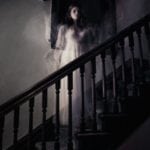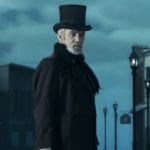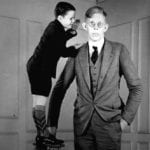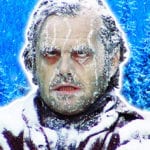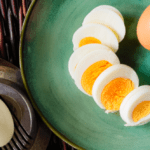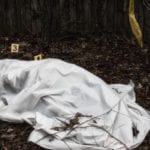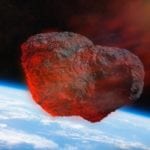 Weird Stuff
Weird Stuff  Weird Stuff
Weird Stuff  Our World
Our World 10 Ways Your Christmas Tree Is More Lit Than You Think
 Movies and TV
Movies and TV The 10 Coolest Stars to Set Sail on The Love Boat
 History
History 10 Things You Didn’t Know About the American National Anthem
 Technology
Technology Top 10 Everyday Tech Buzzwords That Hide a Darker Past
 Humans
Humans 10 Everyday Human Behaviors That Are Actually Survival Instincts
 Animals
Animals 10 Animals That Humiliated and Harmed Historical Leaders
 History
History 10 Most Influential Protests in Modern History
 Creepy
Creepy 10 More Representations of Death from Myth, Legend, and Folktale
 Technology
Technology 10 Scientific Breakthroughs of 2025 That’ll Change Everything
 Weird Stuff
Weird Stuff Ten Bizarre Facts About The Doge Meme
 Our World
Our World 10 Ways Your Christmas Tree Is More Lit Than You Think
 Movies and TV
Movies and TV The 10 Coolest Stars to Set Sail on The Love Boat
Who's Behind Listverse?

Jamie Frater
Head Editor
Jamie founded Listverse due to an insatiable desire to share fascinating, obscure, and bizarre facts. He has been a guest speaker on numerous national radio and television stations and is a five time published author.
More About Us History
History 10 Things You Didn’t Know About the American National Anthem
 Technology
Technology Top 10 Everyday Tech Buzzwords That Hide a Darker Past
 Humans
Humans 10 Everyday Human Behaviors That Are Actually Survival Instincts
 Animals
Animals 10 Animals That Humiliated and Harmed Historical Leaders
 History
History 10 Most Influential Protests in Modern History
 Creepy
Creepy 10 More Representations of Death from Myth, Legend, and Folktale
 Technology
Technology 10 Scientific Breakthroughs of 2025 That’ll Change Everything
10 Reasons JFK’s Death Might Have Been An Accident
The assassination of John F. Kennedy remains one of the most controversial events of the 20th century. While the most widely accepted theory is that Lee Harvey Oswald acted alone in killing Kennedy, a huge number of conspiracy theories have arisen about that fateful day in Dealey Plaza. But what if the President’s death was actually a terrible accident? First popularized by the ballistics expert Howard Donahue, an intriguing theory holds that after Oswald opened fire on the motorcade, a panicking Secret Service agent accidentally discharged his rifle, firing the shot that killed Kennedy.
This list is not intended to accuse anyone other than Lee Harvey Oswald of having anything to do with the assassination of John F. Kennedy. Donahue’s theory is just that—a theory. The following is merely an examination of the evidence for (and against) one of the most fascinating “What Ifs” in American history.
10Multiple Witnesses Described the Last Two Shots As Very Close Together
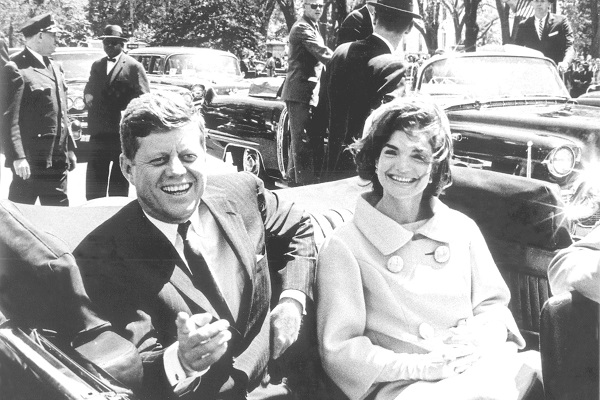
Oswald used a bolt-action Carcano rifle, which requires the shooter to make four movements after each shot in order to cycle the spent case and chamber the next round. The Warren Commission found that the minimum time required to fire the rifle, cycle the bolt once, and fire a second shot was 2.3 seconds. The most commonly accepted theory is that Oswald fired three shots, one of which missed, requiring him to cycle the bolt twice. Based on footage from the Zapruder Film, the Commission concluded that the two shots that hit Kennedy were fired 4.8–5.6 seconds apart.
If the second shot missed, then all three bullets must have been fired in that time. If, however, the first or third shot missed, then the minimum timespan increases to 7.1–7.9 seconds for all three shots. Neither scenario is impossible, although 4.8–5.6 seconds would be a remarkably short time to fire accurately on a moving vehicle.
But the Warren Commission’s calculations are only important if the shots are assumed to have occurred at equal intervals. If, instead, the last two shots were to occur almost simultaneously, then a single bolt-action rifle could not fire them both. Interestingly, some witness testimony seems to support that scenario. Notable is the testimony of Secret Service agent Bill Greer, who drove the Presidential limousine, when asked: “How much time elapsed, to the best of your ability to estimate and recollect, between the time of the second noise and the time of the third noise?”
Greer answered: “The last two seemed to be just simultaneously, one behind the other, but I don’t recollect just how much, how many seconds were between the two. I couldn’t really say.”
District Clerk James Crawford, who was standing at the intersection of Elm and Houston streets during the shooting, stated: “As I observed the parade, I believe there was a car leading the President’s car, followed by the President’s car and followed, I suppose, by the Vice President’s car and, in turn, by the Secret Service in a yellow closed sedan. The doors of the sedan were open. It was after the Secret Service sedan had gone around the corner that I heard the first report and at that time I thought it was a backfire of a car but, in analyzing the situation, it could not have been a backfire of a car because it would have had to have been the President’s car or some car in the cavalcade there. The second shot followed some seconds, a little time elapsed after the first one, and followed very quickly by the third one. I could not see the President’s car.”
Deputy Sheriff Roger Craig was standing in front of the Sheriff’s Office on Houston Street, having watched the motorcade pass and turn onto Elm. Once it was out of sight, Craig heard three shots and started running toward the scene. Here is part of his testimony, as taken by Commission staffer David Belin:
BELIN: About how far were these noises apart?
CRAIG: The first one was—uh—about three seconds—two or three seconds.
BELIN: Two or three seconds between the first and the second?
CRAIG: It was quite a pause between there. It could have been a little longer.
BELIN: And what about between the second and third?
CRAIG: Not more than two seconds. It was—they were real rapid.
None of this conclusively disproves that Oswald was the sole shooter. But it does raise an interesting possibility—if the second and third shots were fired so close together, is it conceivable that one of them wasn’t fired by Oswald at all?
Kennedy’s assassination is still one of the greatest sources of contention in American history. Read the whole story in The Hidden History of the JFK Assassination at Amazon.com!
9George Hickey Was The Only Secret Service Agent Armed With A Rifle
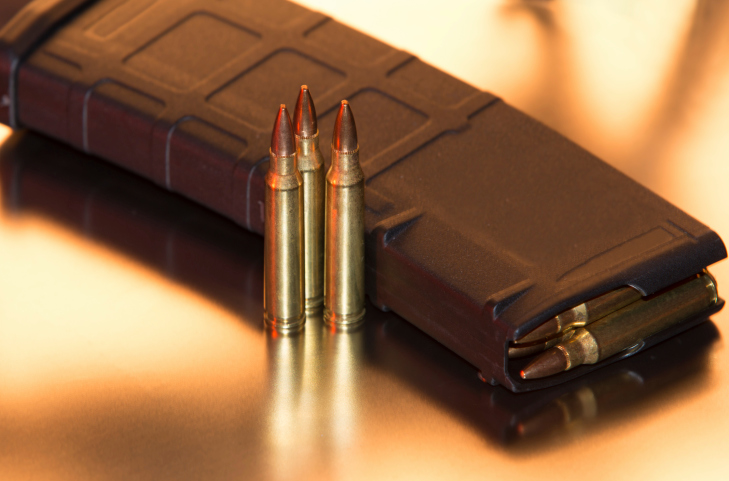
There were 12 Secret Service agents assigned to guard Kennedy on the day of the assassination. Special Agent in Charge Roy Kellerman rode in the front passenger seat of the Presidential limousine, with Special Agent Bill Greer driving. Win Lawson and Verne Sorrels rode in the lead vehicle and Agent Sam Kinney drove the rear vehicle, with the President’s limousine in the middle. Also in the rear vehicle were Special Agent Emory Roberts in the front passenger seat, George Hickey in the left rear seat, and Glen Bennett in the right rear seat. Special Agents Clint Hill, Tim Mcintyre, Jack Ready, and Paul Landis stood on the rear car’s running boards.
The lead vehicle was a hardtop, the other two were convertibles with their tops down. All of the agents were armed with 4-inch-barreled revolvers. As per standard procedure, one agent, Hickey, was also armed with an AR-15 rifle. Thus, assuming Oswald did not fire the headshot, then Hickey’s rifle was the only other one available.
8Hickey Did Produce The Rifle During The Shooting

Hugh W. Betzner, Jr., an eyewitness who had been standing at the intersection of Elm and Houston when the motorcade turned left onto Elm, reported that: “I also saw a man in either the President’s car or the car behind his and someone down in one of those cars pull out what looked like a rifle.” Betzner also described seeing a “flash of pink” somewhere in the motorcade, which has occasionally been interpreted as a muzzle flash. This flash could have come from Hickey’s rifle, or any of the agents’ handguns, although an AR-15 creates a much more noticeable flash. However, it is much more likely that the “flash of pink” referred to Jackie Kennedy, who was dressed in pink, reaching out to Special Agent Clint Hill, who had jumped from the rear car onto the back of the Presidential limo. Betzner actually specifically describes the flash as resembling “someone standing up and then sitting back down,” so the muzzle flash theory seems relatively dubious.
However, Hickey himself confirmed Betzner’s report that he did “pull out” the rifle during the shooting, testifying: “At the end of the last report I reached to the bottom of the car and picked up the AR-15 rifle, cocked and loaded it, and turned to the rear. At this point the cars were passing under the overpass and as a result we had left the scene of the shooting. I kept the AR-15 rifle ready as we proceeded at a high rate of speed to the hospital.”
7Hickey’s Rifle, But Possibly Not Oswald’s, Could Have Created JFK’s Head Wound
Oswald used a 6.5 x 52mm Carcano M91/38 rifle with full metal jacket ammunition. This is standard military ammunition, designed for penetration, but not massive wound cavitation. The Hague Convention outlawed the use of hollow-point or expanding ammunition in warfare, although it remains used for hunting, and by police and civilians for self-defense. Because the bullet will “mushroom” or expand as it strikes any moderately hard surface, hollow-point bullets generally cause much more severe wounds inside the target than a full metal jacket can.
In his study of the assassination, Howard Donahue argued that the explosive second impact seen in the Zapruder film could not have been caused by Oswald’s full metal jacket bullets. However, the hollow-point bullets from Hickey’s AR-15, behind and to the left of the President, could have. Donahue also claimed that a bullet fragment seen in X-rays of Kennedy’s skull was unlikely to have come from Oswald’s rifle, since full metal jacket bullets generally do not have fragments shear off on impact. Instead, Donahue suggested that Kennedy’s death might actually have been a terrible accident. According to his theory, Oswald’s first bullet hit the President, causing severe but nonfatal wounds. In the aftermath of the shooting, Hickey seized the AR-15 but, inexperienced with the weapon and jolted by the car’s sudden halt, accidentally discharged the rifle, causing Kennedy’s fatal head wound. The shorter distance between Hickey and Kennedy meant that the bullet would have struck the President at a much higher velocity than a bullet from Oswald’s Carcano, making up for the AR-15’s lighter bullet weight.
6Eyewitness Jean Hill Saw Men In The Motorcade Return Fire
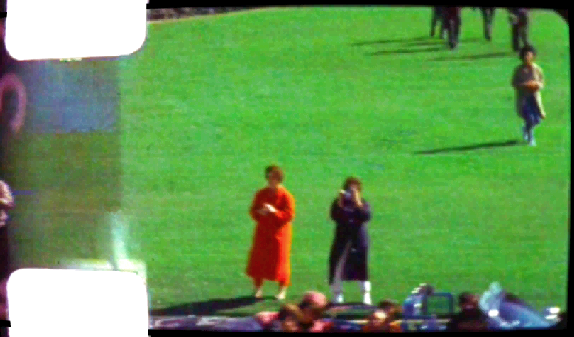
Jean Hill is easily identifiable in the Zapruder Film as a woman in a body-length red suit, standing just off Elm Street as Kennedy’s limousine passes. The vehicle then briefly vanishes behind a road sign. Just as Kennedy emerges, he is shot in the upper back and raises his arms to his throat, then leans left into Jackie. Texas Governor John Connally jolts slightly at being struck by the same bullet and turns to the left to see Kennedy. Here, the vehicle passes Jean Hill and a woman in a dark dress, Mary Moorman, standing to her left. Almost immediately after the film pans them out, Kennedy is struck in the head.
According to Hill’s written testimony: “Just as the President looked up toward us two shots rang out and I saw the President grab his chest and fall forward across Jackies [sic] lap and she fell across his back and said ‘My God he has been shot.’ There was an instant pause between the first two shots and the motorcade seemingly halted for an instant and three or four more shots rang out and the motorcade sped away. I thought I saw some men in plain clothes shooting back but everything was such a blur and Mary was pulling on my leg saying ‘Get down thery [sic] are shooting.’”
It has been argued that the returned fire Hill thought she saw could have been George Hickey accidentally discharging his rifle.
5The Secret Service Detail Were Rumored To Have Been Drinking The Night Before
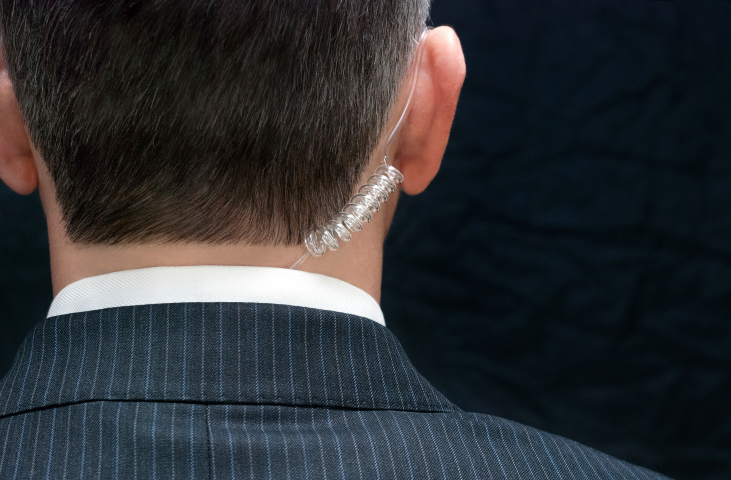
The night before the assassination, several of the Secret Service personnel guarding the President went out to a Fort Worth nightclub called the Cellar Coffee House. The club did not have a license to serve alcohol and the agents apparently consumed nothing stronger than fruit drinks, some with “non-alcoholic rum flavoring.” Nine Secret Service agents also attended a Fort Worth Press Club reception which did serve drinks. However, according to later testimony, none of the agents consumed more than one mixed drink or three beers.
The columnist Drew Pearson later claimed that at least one of the Secret Service agents had been visibly inebriated at the Press Club reception. In his syndicated column, Pearson alleged that the agents had been drinking until 3:00 AM at the Press Club before heading on to the Cellar Coffee House, which he characterized as a “beatnik joint.” This was strongly denied by the Secret Service and by Calvin Sutton, an editor at the Morning Star-Telegram and the host of the reception. Sutton did admit to keeping the Press Club open several hours later than the scheduled 12:00 PM closing time. At 2:00 AM, as the last guests were leaving, a party of four Secret Service agents entered. Sutton asked his bartender to serve them one drink each, after which they left. Sutton insisted that he was not aware of any agent having more than one or two drinks in total, although he acknowledged he could not necessarily tell Secret Service personnel apart from other White House staffers attending the reception. Several other witnesses also testified that they did not see any agent who appeared noticeably intoxicated.
Pearson’s article has occasionally been used to argue that some Secret Service agents may have been hungover on the day of the assassination, and that this may have impaired their judgement. However, while Pearson’s claims cannot conclusively be ruled out, they have proven impossible to corroborate and seem relatively unlikely. As with many details of the assassination, we may never know for sure.
4The Mysterious Autopsy
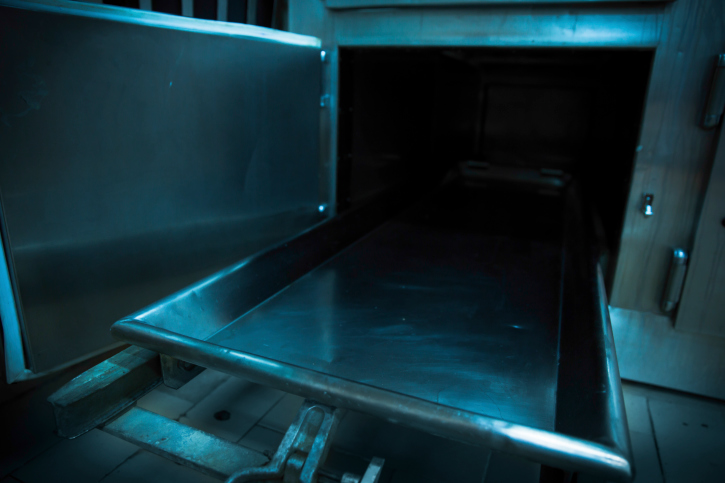
After the shooting, Kennedy was rushed to Parkland Memorial Hospital, where he was pronounced dead. According to Texas state law, the President’s body was not allowed to be taken from the hospital until after an autopsy had been entirely performed. However, the Secret Service chose to ignore this, taking the body straight to the airport and securing it on board Air Force One. According to Charles Crenshaw, a doctor at Parkland, this led to a heated confrontation between Secret Service agents and Dallas Chief of Forensic Pathology Earl Rose, during which the agents displayed their guns menacingly. The Pulitzer Prize-winning author Anthony Summers has claimed that the sidearms were actually drawn and Dr. Rose and others forced against a wall while the body was taken away, although Crenshaw does not mention this.
The body was flown to Maryland’s Bethesda Naval Hospital, where an autopsy was finally carried out. Secret Service agents Roy Kellerman, William Greer, and John O’Leary were all present during the autopsy. According to proponents of the accident theory, the Secret Service might have been desperately trying to hide something, and it might have been the trajectory of the bullet through the head. An autopsy performed in Texas, not under their auspices, could easily have determined whether the bullet struck from right to left or left to right, and whether it came from an elevation of 16 degrees or the same elevation.
Why would the Secret Service, of all organizations, refuse to let the Parkland Memorial Hospital’s professional surgeons perform the autopsy? What is the difference between an autopsy performed by expert professionals in Dallas, and one performed by expert professionals elsewhere?
Was it an accident after all? Get all the facts in Who Really Killed Kennedy?: 50 Years Later: Stunning New Revelations About the JFK Assassination at Amazon.com!
3Kennedy’s Wounds
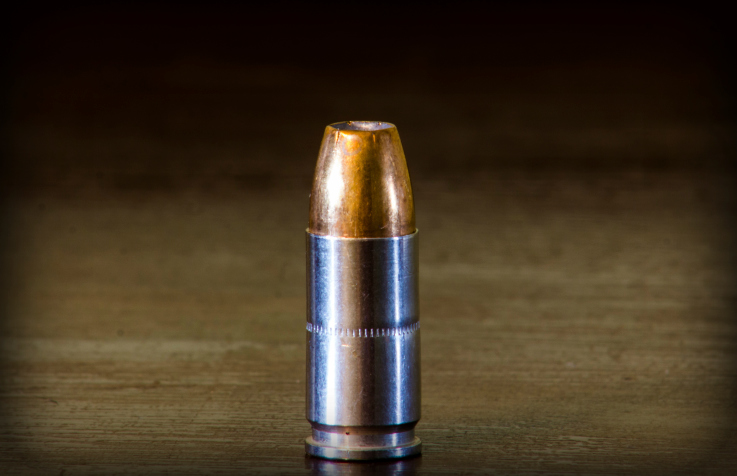
A fact much beloved by conspiracy theorists is that the entrance wound to the back of Kennedy’s head measured six millimeters wide—significantly less than the width of Oswald’s 6.5mm Carcano bullets, which were actually 6.8 millimeters across. How can a bullet make a hole smaller than itself? According to the Warren Commission: “The dimension of 6 millimeters, somewhat smaller than the diameter of a 6.5-millimeter bullet, was caused by the elastic recoil of the skull, which shrinks the size of an opening after a missile passes through it.”
This is actually quite plausible, since the scalp itself, containing fluid, will indent slightly as the bullet strikes it. If it is pressed against a hard, unyielding object like bone, then the entrance wound can appear to have a smaller diameter than the bullet, because the skin will bend inward around the entrance. Furthermore, the skull itself does have elasticity on the order of 15–25 gigapascals of pressure. This measurement indicates the extent to which a human skull will deform before shattering. Pressure of 10 GPa would deform a skull, but probably not break it.
When a bullet penetrates it at high speed, thus exerting more pressure, the skull usually shatters into fragments. The inside will be blasted into the brain, while the scalp may hold the outside of the skull intact. The Warren Commission’s explanation for the size of the wound is perfectly reasonable, however it is worth noting that the wound would have been measured from the exterior of the scalp. There is no information on whether the interior of Kennedy’s skull was measured.
Hickey’s rifle was an AR-15 in 5.56mm NATO caliber. The 5.56mm bullet is actually 5.7 millimeters in diameter, and could very easily have caused a wound only slightly wider than itself in a human head. This does not prove that Hickey was the shooter, but does not disprove the theory any more than it proves Oswald was the shooter.
2Multiple Witnesses Smelled Gunpowder At Street Level
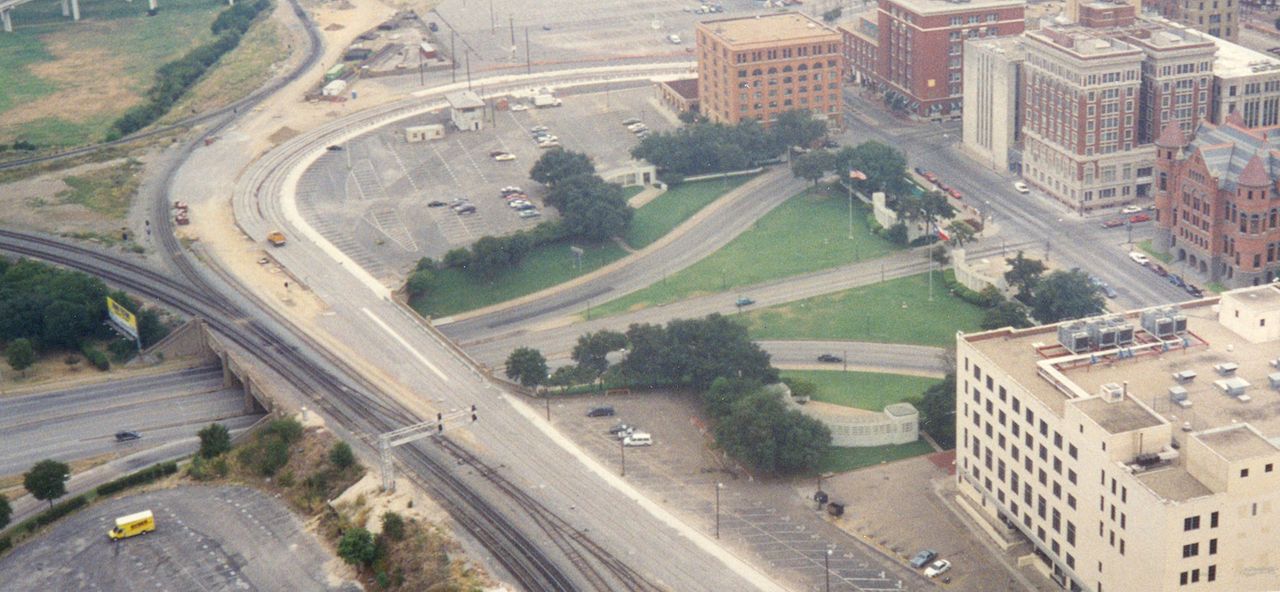
At least seven witnesses testified that they smelled gunpowder at street level immediately after the shooting.
Billy Martin was a Dallas police officer who was driving his motorcycle just behind the Presidential limousine’s left rear fender at the time of the shooting. He is on record as stating: “You could smell the gunpowder . . .you knew he wasn’t far away. When you’re that close, you can smell the powder burning . . .you could smell the gunpowder . . .right there in the street.”
Senator Ralph Yarborough, riding with Vice President Johnson in the second convertible, claimed to be able to: “smell the gunpowder from the assassin’s murder weapon.”
Elizabeth Cabell testified that she was riding in the third or fourth car behind the President’s limousine when the shooting occurred. She had this to say: “It was in just a fleeting second that I jerked my head up and I saw something in that window, and I turned around to say to Earle, ‘Earle, it is a shot,’ and before I got the words out, just as I got the words out, he said, “Oh, no; it must have been a . . .’ [then] the second two shots rang out. After that, there is a certain amount of confusion in my mind. I was acutely aware of the odor of gunpowder.”
Tom Dillard was a press photographer riding well behind the Presidential limousine. At the time of the shooting, Dillard’s vehicle was still approaching the Texas School Book Depository Building, facing Oswald’s sniper position. He stated: “I very definitely smelled gunpowder when the car moved up at the corner.”
Virgie Rackley was a bystander close to the street in front of the Depository Building who, after the second shot, smelled gunsmoke.
Earle Brown was a police officer stationed on top of the overpass under which the motorcade passed after the shooting. At the time of the shooting, Brown was looking north toward Dealey Plaza and the Depository Building. In his testimony he stated: “I heard these shots and then I smelled this gunpowder . . .It come on it would be maybe a couple minutes later so—at least it smelled like it to me.” Officer Joe Smith also reported, “a distinctive smell of gun smoke cordite,’ as he rode along Elm Street.
According to the House Select Committee on Assassinations (HSCA), measurements taken at Love Field , 8.5 kilometers (5.3 mi) by road from Dealey Plaza, found that the wind on the day of the assassination was blowing at around 24–32 kilometers per hour (15–20 mph) from the west-northwest.
1Oswald’s Position And The Path Of The Headshot

The Warren Commission estimated the distances from Oswald’s firing position in the Book Depository to Kennedy’s seat in the limousine as 53 meters (175 ft), 75 meters (240 ft), and 80 meters (265 feet) for each of the three shots heard. The last shot is generally accepted as the headshot, but the HSCA gives the placement of Kennedy’s head entrance wound as 10 centimeters (3.9 in) above the external occipital protuberance and 1.8 cm (0.7 in) to the right of the midline. The exit wound was found to be 11 cm (4.3 in) in front of the entrance wound, 1 cm (0.4 in) below it, and 5.6 cm (2.2 in) right of midline, near the right temple. Given his position from the 6th floor corner window of the Texas School Book Depository, this casts some doubt on Oswald firing the headshot. A computer rendering of a line drawn through the two head wounds and extending behind the target intersects the Dal-Tex Building, behind the Depository.
This does not necessarily prove or disprove anything, since the position of the President’s head is very difficult to determine. But it does allow the possibility that Hickey’s rifle was the source of the shot. Oswald’s rifle might also have been the source. A gunman on the famous grassy knoll does seem unlikely, since the wound in the rear of Kennedy’s head would have been larger and less neat if it were the exit wound.
FlameHorse is a writer for Listverse.

